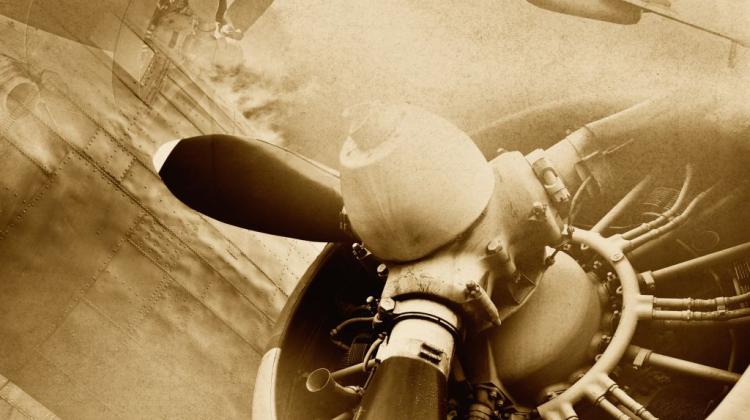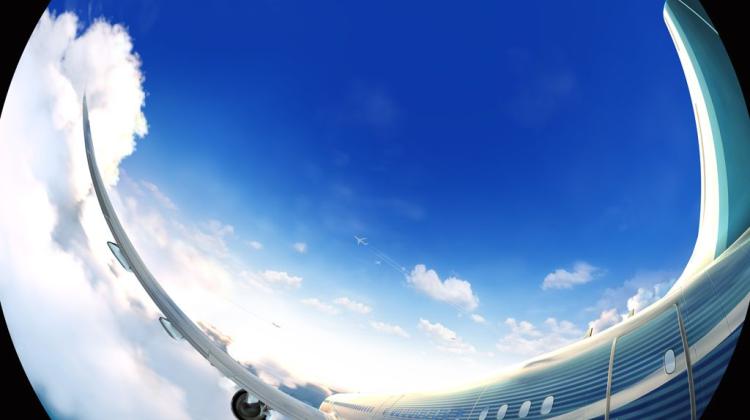Planetarium Heavens of Copernicus prepared a film in fulldome technology

The first Polish fulldome film has been produced by the Warsaw planetarium Heavens of Copernicus. "Dream to Fly" is the story of the history of aviation and human dream of flying.
"Dream to Fly" is the first film produced by the film studio of the Heavens of Copernicus planetarium in Warsaw\'s Copernicus Science Centre. The planetarium visitors can already enjoy the production.
The music is composed by Michał Lorenc, and Danuta Stenka is the narrator, also in the English language version.
Viewers travel through twelve ages and discover the key moments in the history of aviation, and watch machines, which were able to soar the skies. They meet Leonardo da Vinci, the Montgolfier brothers, the Wright brothers. They fly in a balloon, blimp, plane. As the dream of flying took man into space, they also "visit" a space station and fly a rocket.
"I wanted to create something that would combine art and science. Something that would tell the story in a movie, and not be purely popular science. We wanted to put a lot of emotion into the film, so that the story would captivate the viewer" - said the film producer Maciej Ligowski.
The production took three years and began before the completion of the planetarium building. "Although we did not have our own planetarium, we knew that such spherical dome would give a completely different picture display capabilities than a regular screen - said planetarium director Dr. Weronika Śliwa. - Planetarium is associated with stars, space, raising from the ground. A show about fulfilling this dream was a perfect match for our vision of the planetarium."
The move is the first Polish production in fulldome technology. This technology enables the projection on the spherical planetarium screen that surrounds the audience on all sides. The idea, script, sketches and visualizations are created as in ordinary animated film. Production, however, is a bit different than in a traditional animated film. "We compose an image for the dome, so the moving picture frame is closed in a circle, and not - as in the case of traditional film - a rectangle. You need to think a little differently about composing shots" - told PAP director Paulina Majda.
Nearly 40 - minute animation consists of 63 thousand frames, each frame is twice as large as a cinema frame. Creators have to stick to certain rules to ensure that that the image displayed on the dome is presented properly. "The dome has a strategic point that the viewer looks at when sitting in the planetarium. It\'s not it at its zenith, but in a quarter of the entire screen . We must stick to that point so that the viewer has contact with it as often as possible" - said the director.
The cut is crucial. "You should not make sharp cuts, because then the viewer can feel dizzy. The screen surrounds us, and our perception is much stronger , senses are heightened, under the dome we are more sensitive. Also, the film is much slower, because you can not make very fast camera movements" - described Paulina Majda.
Narrator Danuta Stenka admitted that she felt like a child watching the movie. "You took me on an air journey and made my childhood dream come true. Only after watching the movie I realised you have a fantastic sound system, and I could have done much more while recording my text with the microphone" - said the actress.
In early June, the film won the Janus award at Fulldome Festival in the German city of Jena, one of the most important and prestigious events in the world planetarium industry. In September at the Hawaii Imiloa Film Festival, it was unrivalled in the category "Best Script/Story".
PAP - Science and Scholarship in Poland
ekr/ agt/ mrt/
tr. RL
Przed dodaniem komentarza prosimy o zapoznanie z Regulaminem forum serwisu Nauka w Polsce.
















